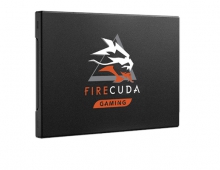
SSDs and RAM Prices To Crash in 2019
Gartner says that additional capacity in both DRAM and NAND flash is expected to result in a correction in 2019, with prices to start to gradually decline.
Worldwide semiconductor revenue is forecast to total $386 billion in 2017, an increase of 12.3 percent from 2016, according to Gartner. Favorable market conditions that gained momentum in the second half of 2016, particularly for commodity memory, have accelerated and raised the outlook for the market in 2017 and 2018.
"While price increases for both DRAM and NAND flash memory are raising the outlook for the overall semiconductor market, it will also put pressure on margins for system vendors of smartphones, PCs and servers," said Jon Erensen, research director at Gartner. "Component shortages, a rising bill of materials, and the prospect of having to counter by raising average selling prices (ASPs) will create a volatile market in 2017 and 2018."
PC DRAM pricing has doubled since the middle of 2016. A 4GB module that cost $12.50 has jumped to just under $25 today. NAND flash ASPs increased sequentially in the second half of 2016 and the first quarter of 2017. Pricing for both DRAM and NAND is expected to peak in the second quarter of 2017, but relief is not expected until later in the year as content increases in key applications, such as smartphones, have vendors scrambling for supply.
"With memory vendors expanding their margins though 2017, the temptation will be to add new capacity," said Mr. Erensen. "We also expect to see China make a concerted effort to join the memory industry, setting the market up for a downturn in 2019."
Unit production estimates for premium smartphones, graphics cards, video game consoles and automotive applications have improved and contributed to the stronger outlook in 2017. In addition, electronic equipment with heavy exposure to DRAM and NAND flash saw semiconductor revenue estimates increase. This includes PCs, ultramobiles, servers and solid-state drives.





















